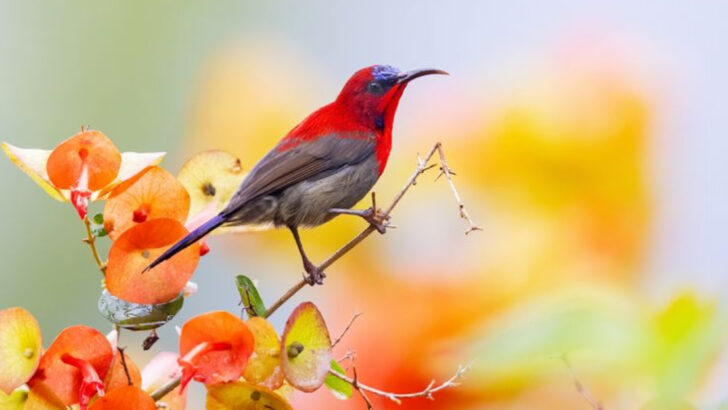Red doesn’t whisper in the wild—it shouts. From blazing cardinals perched like fire on snowy branches to tanagers flashing like rubies in the treetops, red birds demand your attention. They’re bold, beautiful, and impossible to ignore. But here’s the twist: not all of them are who you think they are. Some are lookalikes in clever disguises. Others flash just enough crimson to throw even seasoned birders off track. One wrong glance, and you’re congratulating yourself on spotting a rare gem… only to realize you’ve seen it a dozen times before. Let’s untangle the feathers. Meet the 10 dazzling red birds that light up the skies— and 6 more that are trickier than they look.
Cardinal
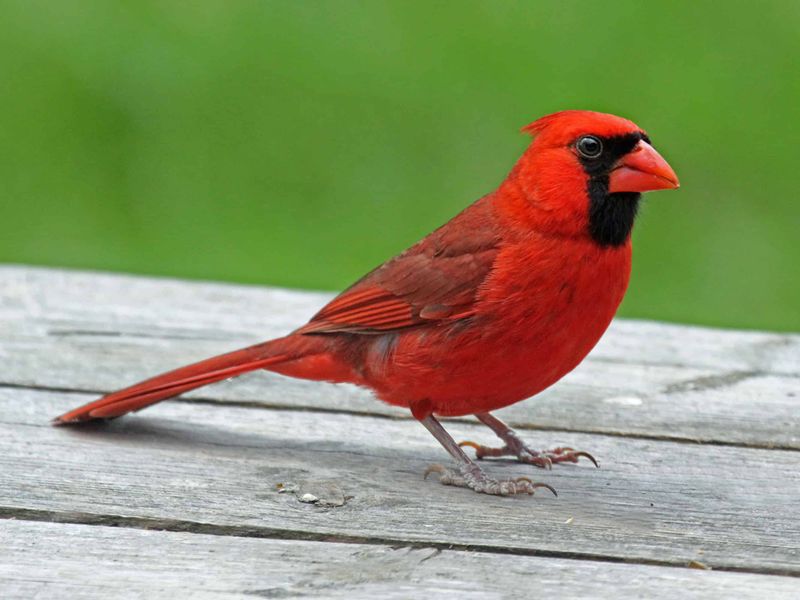
A flash of crimson in the winter’s snow, the Northern Cardinal captivates with its vivid red feathers and distinctive crest. Its song, a cheerful whistle, brightens even the grayest of days. This bird is a year-round resident, often seen in backyards across North America. Did you know? The Northern Cardinal is the state bird of seven U.S. states, a testament to its popularity and beauty. Male cardinals are especially striking, while females sport a more subdued, yet elegant, reddish-brown hue. They symbolize warmth and vitality, a true delight for birdwatchers.
Scarlet Tanager

The Scarlet Tanager’s fiery red plumage and jet-black wings make it an unforgettable sight. Found in North American woodlands, this bird is a true forest gem. Its song is akin to a robin’s but with a sore throat—a raspy melody that charms. During migration, it travels to South America, swapping its scarlet for an olive-yellow coat. This transformation is one of nature’s wonders. Despite its bright colors, it can be surprisingly difficult to spot among the treetops. A burst of red in the canopy, it leaves a lasting impression.
Vermilion Flycatcher
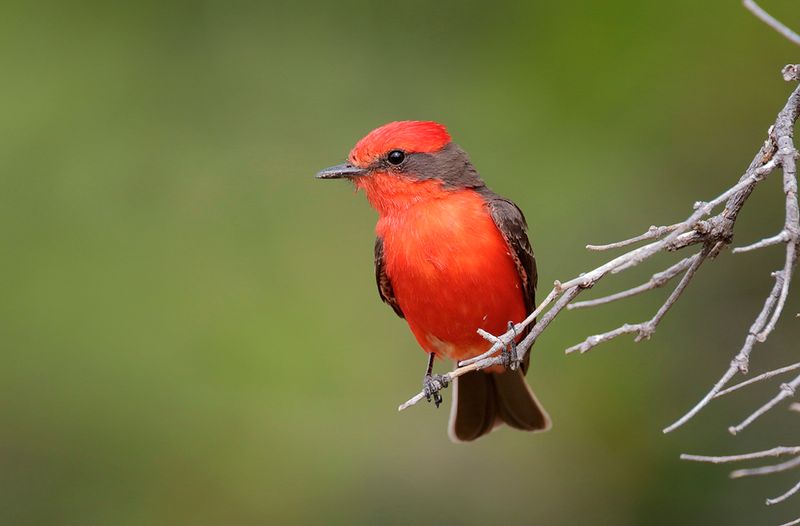
A fiery dart across the sky, the Vermilion Flycatcher dazzles with its brilliant red coloration. Found in the southwestern United States, this bird is an aerial acrobat, catching insects with agility and grace. The male’s vivid red feathers are a stark contrast to its muted brown female counterpart. Known for their patience, they can often be spotted perched quietly, surveying their surroundings. This flycatcher prefers open habitats like savannas and scrublands. Its presence is a beacon of life and energy, a true spectacle of nature’s artistry.
Summer Tanager
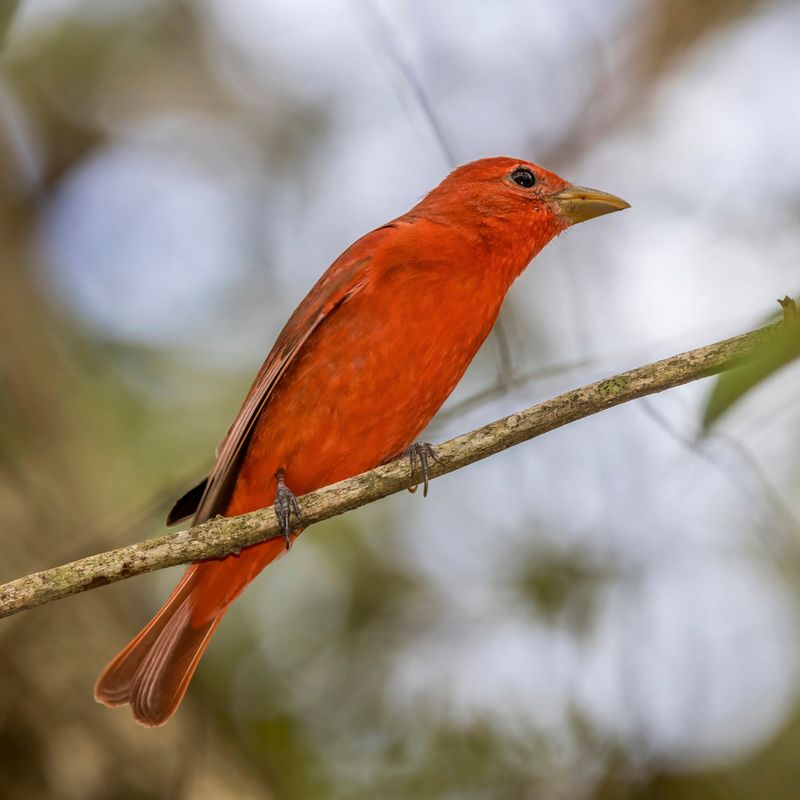
As summer unfolds, the Summer Tanager emerges with its all-red plumage, a true sunlit spectacle. Unlike other tanagers, it lacks any black on its wings or tail, making it a unique sight. This bird is often found in open woodlands and forest edges, feasting on bees and wasps. Its ability to catch stinging insects mid-flight is a remarkable skill. During breeding season, males sing a melodious tune, a serenade to the warm months. As the days grow colder, it migrates to Central and South America, a nomad of the skies.
Red Crossbill
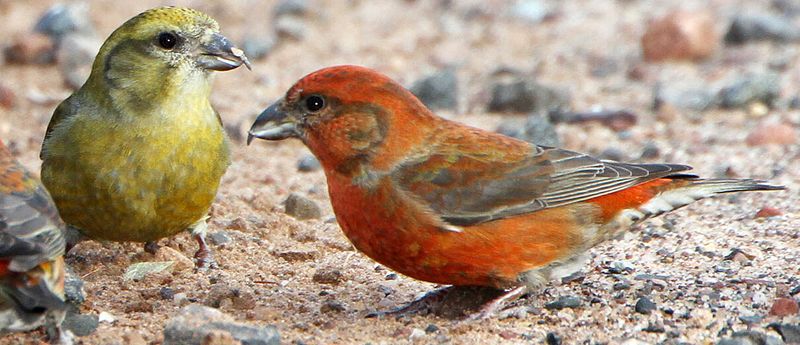
The Red Crossbill, with its peculiar crossed bill, is a master of adaptation. This unique feature allows it to extract seeds from conifer cones with precision. Found in coniferous forests across the northern hemisphere, its red plumage blends beautifully with the evergreen backdrop. These birds are nomadic, following food sources wherever they lead. Their varied calls and songs are a constant soundtrack in the forest. Interestingly, different populations of Red Crossbills have distinct call types, each adapted to local conditions. A marvel of evolution, they intrigue ornithologists worldwide.
Pine Grosbeak
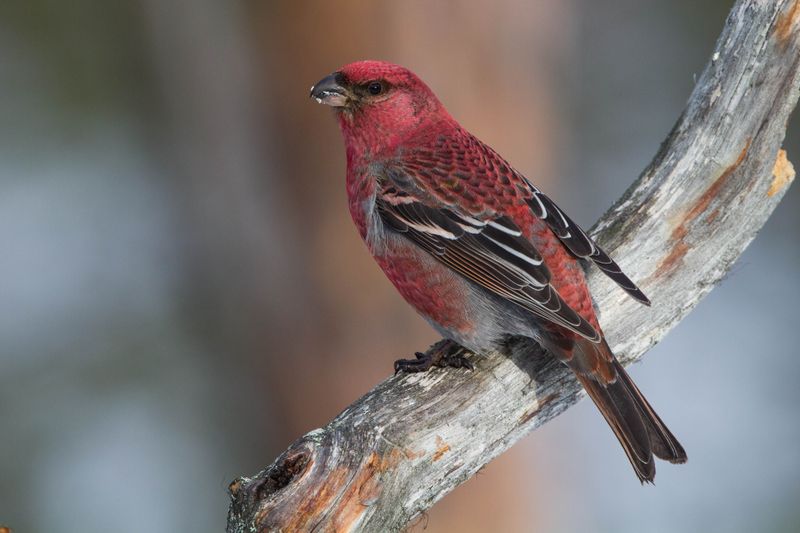
Majestic in its simplicity, the Pine Grosbeak boasts a gentle red hue that seems to embody the tranquility of northern forests. Often found in mixed flocks, this bird exudes a sense of community and peace. Despite its size, its vocalizations are soft and melodic, a soothing presence in the winter chill. Its diet is predominantly vegetarian, feasting on buds, berries, and seeds. During cold months, its red plumage stands out against the snow, a heartwarming sight for any observer. Truly, a gentle giant of the avian world.
Red-breasted Sapsucker

The Red-breasted Sapsucker, with its vibrant red head and breast, is a diligent worker of the forest. It systematically drills rows of holes in trees to feed on sap and insects. These sapsuckers play a crucial ecological role, as their sap wells are used by other species too. Found in western North America’s forests, they are often heard before seen, their rhythmic tapping echoing among the trees. With a call that’s a sharp “queer,” they announce their presence with authority. A symbol of industriousness, their red plumage is a striking feature in the woods.
Common Redpoll
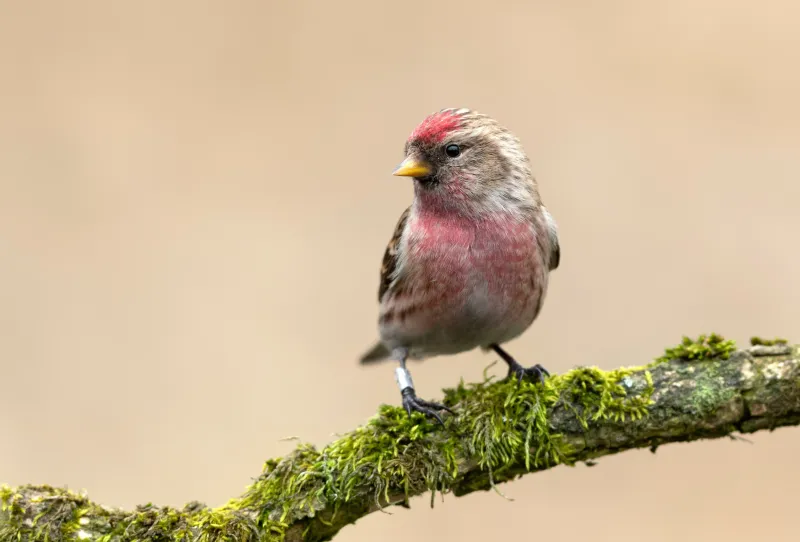
Little bursts of color in the Arctic tundra, Common Redpolls bring life to the harshest environments. These small finches sport a distinctive red cap and a black chin, their plumage an artful blend of browns and reds. Their ability to survive in cold climates is remarkable, often seen flocking to feeders in the winter months. They have a taste for birch and alder seeds, demonstrating a tenacity that belies their size. Agile and sociable, they flit in small groups, a flurry of activity on the snowy canvas. Nature’s own little nomads, they charm with every flutter.
Red Avadavat
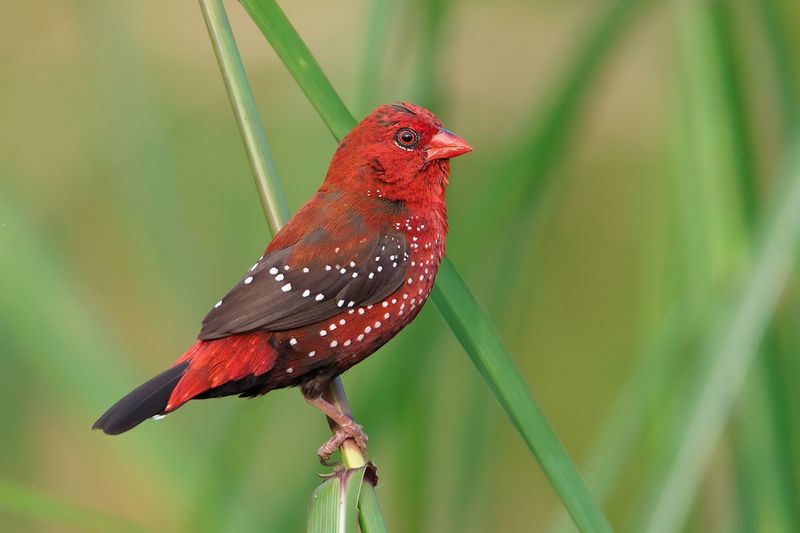
Also known as the Strawberry Finch, the Red Avadavat is a living jewel. Males in breeding plumage glow with intense red coloration dotted with white specks, reminiscent of a strawberry. Found in the subtropical grasslands of Asia, these birds are a delightful spectacle. They feed predominantly on seeds, displaying a lively and social behavior. During non-breeding seasons, males and females sport a more subdued brown color. Their song is a soft, high-pitched series of notes, adding a gentle soundtrack to their surroundings. A symbol of love and passion, they enchant all who encounter them.
Crimson-collared Grosbeak
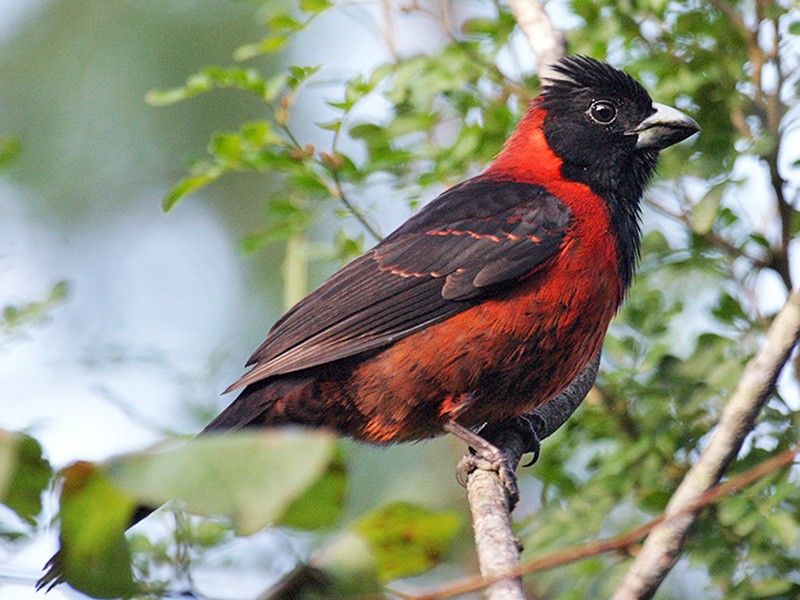
With a striking crimson hood and collar, the Crimson-collared Grosbeak commands attention. Found in the rainforests of Central America, this bird is a vivid splash of color against the lush green foliage. Its diet includes fruits and insects, showcasing its adaptability. Males and females share similar plumage, creating a harmonious visual presence. The call, a sharp whistling note, resonates through the forest canopy. Despite its bold appearance, it can be elusive, blending into the dense jungle. A true wonder of the rainforest, its vibrant hues speak of mystery and allure.
House Finch
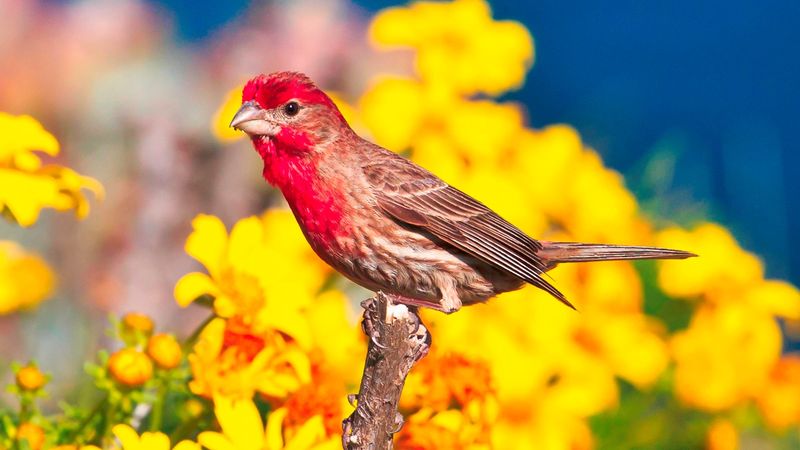
The House Finch, with its cheerful red head and chest, is a familiar sight in urban landscapes across North America. Its adaptability has allowed it to thrive in close proximity to humans, often seen at bird feeders. The males are particularly colorful, while females exhibit a more muted brown streaked appearance. They communicate with a lively, musical warble that adds joy to any environment. Originally native to the western U.S., they’ve spread eastward, becoming a beloved bird in many backyards. A testament to resilience, they exemplify nature’s ability to adapt and flourish in changing worlds.
Purple Finch
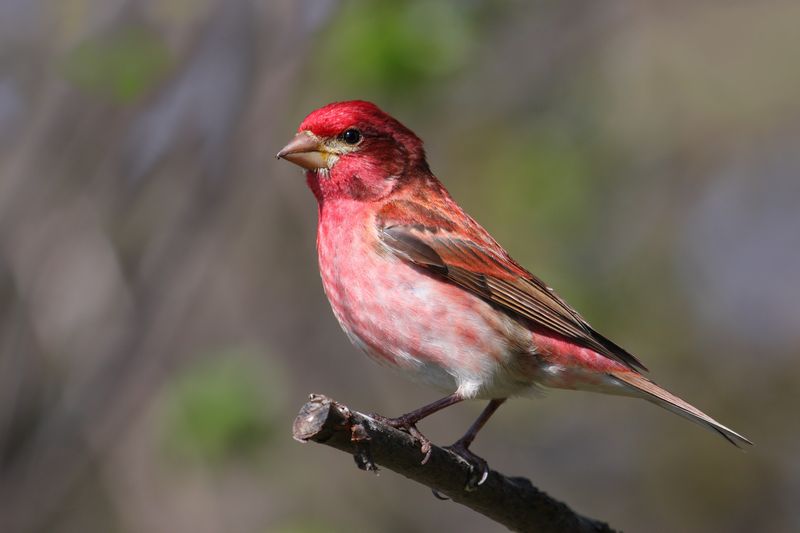
Despite its name, the Purple Finch glows with a raspberry red hue, lighting up the forest edges of North America. Males boast this rich coloration, while females blend in with streaked brown plumage. Their song, a rich, warbling melody, adds an enchanting soundscape. Feeding primarily on seeds and berries, they are vital seed dispersers. During the colder months, they migrate south in search of food, showcasing their adaptability. Observing these finches reveals a tapestry of nature’s palette, where each feather tells a story of survival and beauty.
Crimson Sunbird
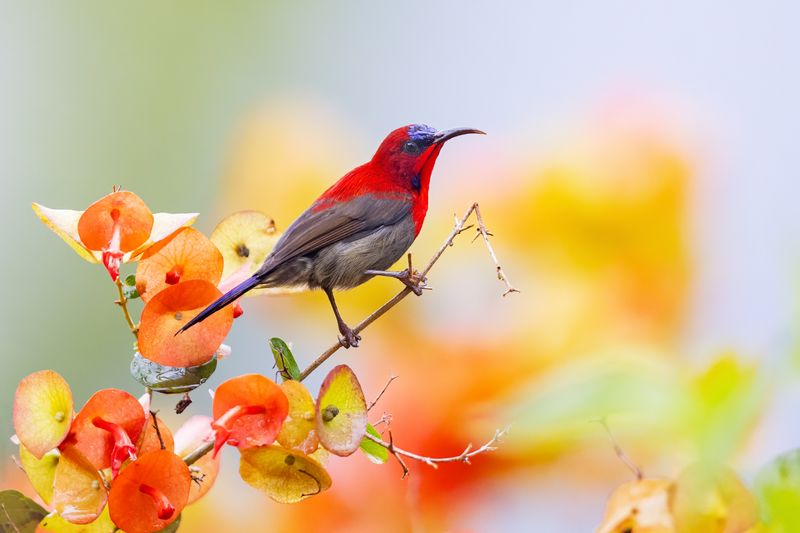
The Crimson Sunbird is a small, vibrant jewel of the Asian tropics. Its brilliant red and metallic green plumage shimmers in the sunlight, captivating any observer. Known as the “Hummingbird of the East,” it flits from flower to flower, sipping nectar with its slender, curved bill. Males display the most vibrant hues, while females are more subdued. Their rapid, darting movements and high-pitched calls animate the garden scenes. As pollinators, they play a crucial role in their ecosystems, bridging the gap between plants and the broader web of life.
Red-billed Firefinch
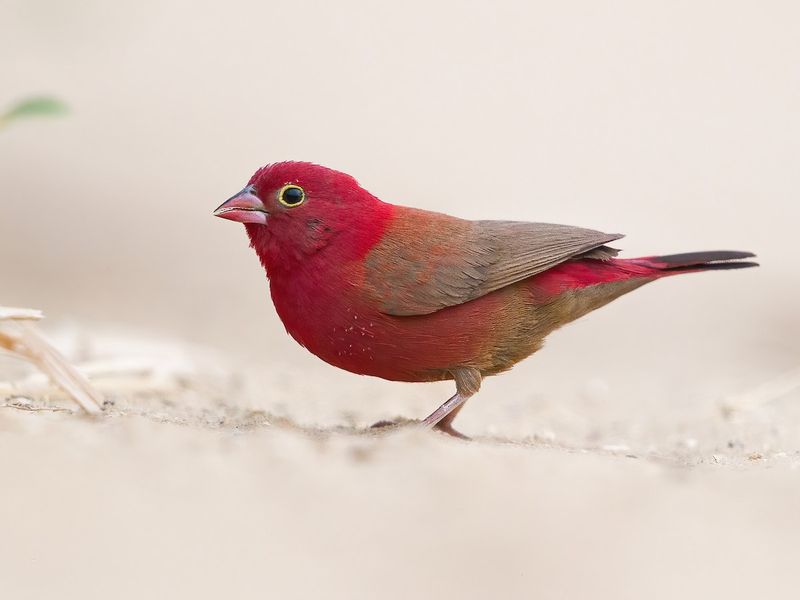
A flame of color in Africa’s savannas, the Red-billed Firefinch dazzles with its bright red body and contrasting black belly. Males are particularly striking, while females don a more muted brown appearance. These sociable birds often form small flocks, their cheerful calls a constant soundtrack. Feeding on seeds and small insects, they exhibit remarkable resilience in arid environments. During the breeding season, males perform elaborate courtship displays, showcasing their vibrant plumage. A symbol of vitality, they bring warmth to the landscape, a reminder of nature’s brilliant adaptability.
Red-tailed Comet
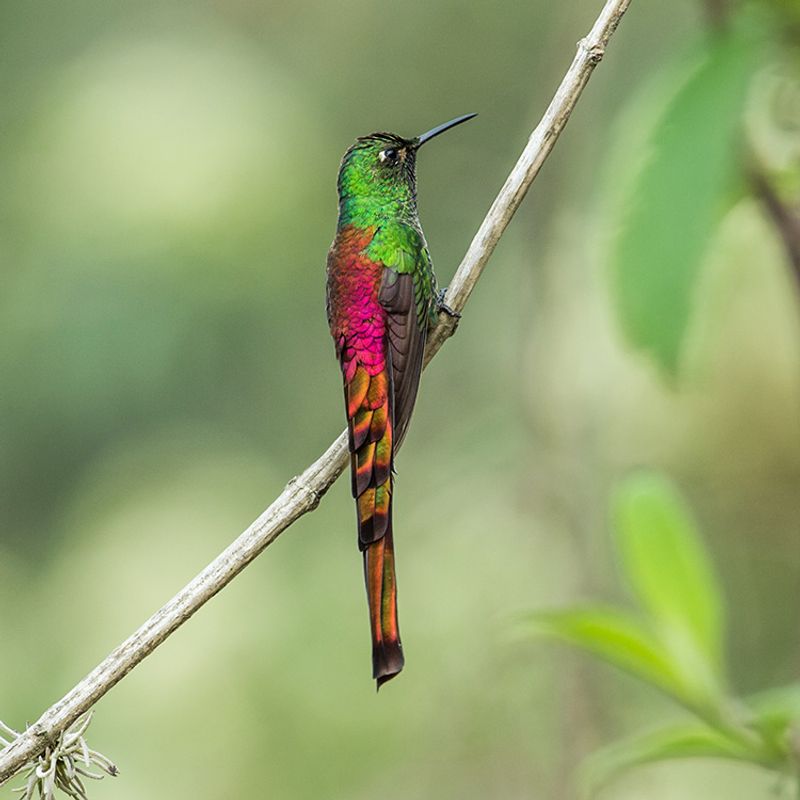
With a grace befitting its celestial name, the Red-tailed Comet flits through the Andean skies like a fiery streak. Its elongated tail feathers, shimmering in hues of red and green, create an ethereal dance. Found in the high-altitude regions of South America, this hummingbird is a master of agility and speed. Its diet consists primarily of nectar, which it extracts with precision using its slender bill. Males are more vividly colored than females, engaging in territorial displays. As a pollinator, it contributes to the rich biodiversity of its mountainous home.
Crimson Rosella
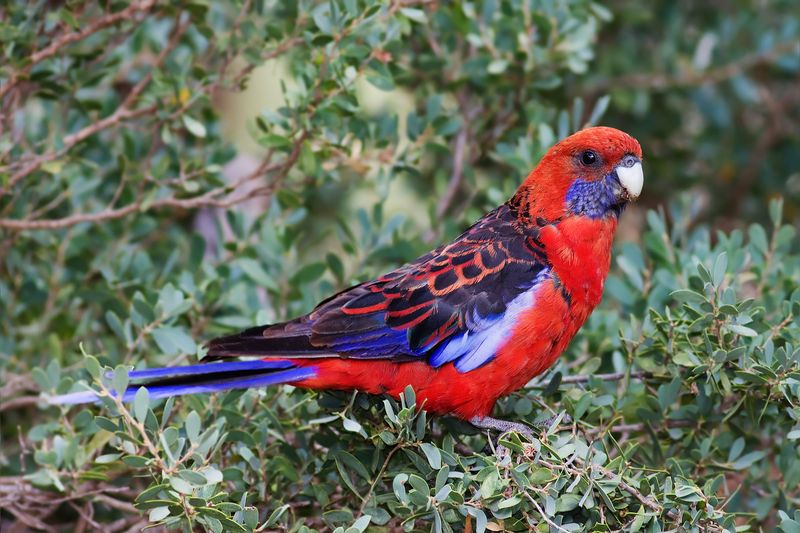
With a splash of red and hints of blue, the Crimson Rosella paints the Australian landscape with vibrancy. A common sight in Eastern Australia, this parrot is known for its striking color combination. Its cheerful call echoes through the eucalyptus woodlands.
Unlike many birds, the Crimson Rosella thrives in urban areas, often visiting parks and gardens, delighting city dwellers. Its curious nature makes it approachable, yet it retains an air of wild freedom.
Fun fact: Crimson Rosellas experience a color change as they age, starting green and transitioning to their iconic red hue over time.

